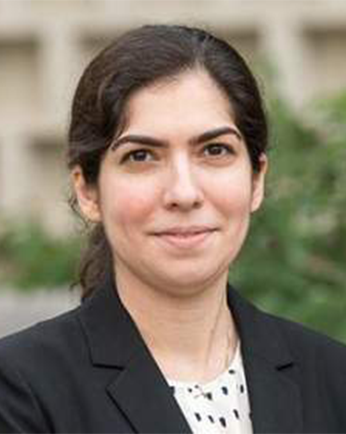Session Abstracts:
Session 7A

Associate Professor
University at Buffalo
Presentation Title: Integration of data and models for large-scale simulation of fire spread across wildland and communities
Co-Authors: Fernando Szasdi-Bardales (University at Buffalo, PhD student), Neil Lareau (University of Nevada Reno, Faculty), Timothy W. Juliano (National Center for Atmospheric Research, Project Scientist II), Kasra Shamsaei (University of Nevada Reno, PhD student), Matthew Roberts (University of Nevada Reno, PhD student), Branko Kosovic (National Center for Atmospheric Research, Director of the Weather Systems and Assessment Program), Hamed Ebrahimian (University of Nevada Reno, Faculty), Ertugrul Taciroglu (University of California, Los Angeles, Faculty)
Abstract: Destructive wildfire events in recent years have led to significant losses. The 2023 Lahaina Fire in Hawaii was the deadliest wildfire in the U.S. in over 100 years. To cope with the increasing frequency and intensity of these events, it is imperative to develop strategies for adaptation and mitigation, enhancing preparedness and response, and promoting recovery and restoration. This presentation focuses on the integration of data and fire spread models to enable a continuous simulation of a wildfire incident where the fire transitions from the wildland into wildland-urban interface communities. Two case studies, the 2018 Camp Fire and the 2021 Marshal Fire will be discussed.

Associate Professor
Oregon State University
Presentation Title: Regional Assessment for Wildfire Hazards
Abstract: Understanding and mitigating the impacts of natural hazards on human communities is complex due to the increasing interconnectedness of the global economy, increasing incidence and severity of climate-related natural hazards, and dependencies among infrastructure systems. Increases in the number or magnitude of wildfires in western US states, which in part are attributable to climate change, are resulting in losses of and damages to assets, especially civil infrastructure. These losses and damages can have major financial repercussions, including delayed post-event community recovery. This presentation will touch upon future directions for the SimCenter to incorporate these impacts and damages so that community-wide impacts can be studied by civil engineers.

Postdoctoral Researcher
University of California, Los Angeles
Presentation Title: FUELVISION: A Multimodal Data Fusion and Multimodel Ensemble Algorithm for Wildfire Fuels Mapping
Co-Authors: Mohamad Alipour; Eric Rowell; Ertugrul Taciroglu
Abstract: Accurate assessment of fuel conditions aids in predicting fire behavior, improving operational decision support, and enhancing overall fire management efforts. Our method leverages diverse data sources, including Landsat-8 optical imagery, Sentinel-1 (C-band) SAR imagery, PALSAR (L-band) SAR imagery, and terrain features, to capture comprehensive information about fuel types and distributions. To predict landscape-scale fuels (Scott and Burgan 40 or time-lag fuels 1hr, 10hr, or 100hr), an ensemble model was trained using the as-received Forest Inventory and Analysis (FIA) plots; however, it yielded poor results due to an inadequate amount of training data. To address the limitations of ground truth data availability, we supplemented our study with pseudo-labeled and synthetic data using generative AI approaches for training purposes. In addition to utilizing FIA field plots obtained from the USDA Forest Service within California, we employed these augmented datasets to enhance the robustness and coverage of our model training. Selecting an ensemble strategy, including those of deep learning neural networks, decision trees, gradient boosting, and ensemble methods, achieved a fuel mapping accuracy of nearly 80%. Through extensive experimentation and evaluation, we validate the effectiveness of our proposed approach in two regions that burned in 2021: the Dixie and Caldor Fire incidents. Comparative analysis against high-resolution NAIP imagery and timber harvest maps affirmed the robustness and reliability of our approach. In conclusion, our study highlights the value of leveraging multimodal data, generative AI, and harnessing ensemble machine learning models for real-time fuel mapping.

PhD Student
University of Oklahoma
Presentation Title: Firestorm Simulation and Analysis in a Changing Climate: An Oklahoma Case Study in Community Resilience
Co-Authors: P. Scott Harvey; Kanthasamy Muraleetharan
Abstract: Wildfires in the Southern Great Plains have burned millions of acres in the past decade, causing substantial damage to both land and infrastructure and resulting in millions of dollars spent on repairs. The frequency and size of these wildfires have been exacerbated by climate change, particularly due to worsening climatic conditions characterized by hot/dry/windy weather. Recent wildfires in urban communities in Oklahoma (e.g., the March 31st Oklahoma firestorm) have raised significant concerns, primarily due to their devastating impacts on social and infrastructure systems, where these impacts include road closures, damage to electrical components, and the destruction of homes. The ability to analyze these wildfires comprehensively, particularly at the wildland-urban interface, plays a pivotal role in the development of resiliency and mitigation strategies through risk and fragility analysis of infrastructure components. In order to analyze wildfire resiliency strategies for Oklahoma’s urban communities, wildfire simulations must first be performed and analyzed. The United States Department of Agriculture's FARSITE wildfire simulation software is utilized to simulate recent wildfire events in Oklahoma urban areas. Monte Carlo simulations are performed to assess the probability of firestorm propagation and associated damage in urban communities. These simulations also incorporate meteorological conditions as random variables, allowing for the approximation of conditions in a changing climate. The results obtained from these simulations are used to make recommendations concerning emergency response strategies and community development measures aimed at enhancing resilience of urban communities.

Assistant Professor
Clemson University
Presentation Title: Simulating Urban Heat Environment through Physics-based Deep Learning
Co-Author: Tong Liu
Abstract: The urban environment is a multifaceted phenomenon influenced by numerous factors, making its understanding and quantification a longstanding challenge. Spillover is one of the critical processes in the urban environment such as the propagation of heat across neighborhoods. Quantifying spillover effects is crucial to understanding and simulating the urban heat environments. Existing studies have predominantly relied on conventional physics diffusion models, utilizing ad-hoc parameters to simulate and predict spillover effects from immediate neighbors. However, these conventional approaches often fall short of capturing the spatial heterogeneity and randomness inherent in the urban environment. Here, we advance the understanding of urban heat environments by introducing a novel physics-based deep learning approach. We build the model upon a random diffusion process to account for the spillover effects from neighbors and encode the heterogeneous neighborhood attributes into the equation to account for the complexity of the urban heat environment. The results show that the spatial variances of urban heat environments are highly predictable at 70% - 80% by incorporating nonlocal spillover in our model. Integrating heterogeneity and dynamics of urban environment reveals general and consistent scales of spillover effects, ranging from 0.7 to 1.2 km among cities with a variety of landscapes and geography. The proposed model, validated with spatial data from five cities in the U.S., not only reveals the dynamics of various spatial phenomena and improves the predictability of the spread, but also informs the design and planning of infrastructures for adaptation to the increasing global climate challenges such as heatwaves.

Associate Research Scientist
Johns Hopkins University & NIST
Presentation Title: Alternatives for Resilient Communities with Consideration of Uncertainty
Abstract: Community resilience planning is a complex process that involves multiple large-scale systems, public sector decision-making, and the integration of diverse stakeholder perspectives. The National Institute of Standards and Technology (NIST) has developed the Alternatives for Resilient Communities (NIST-ARC) software as an interactive tool to facilitate the development of alternative action plans that meet community resilience and cost goals. However, community resilience assessment is subject to inherent uncertainties stemming from various sources, such as incomplete data, imprecise hazard predictions, and the dynamic nature of interdependencies among systems. Recognizing the significance of uncertainty in resilience assessment, this paper introduces an extension to the NIST-ARC software that explicitly considers uncertainty in the decision-making process.
The proposed uncertainty extension allows for the quantification and propagation of uncertainties associated with input parameters through the model. By doing so, the uncertainty in output parameters, crucial for effective decision-making, can be estimated. To demonstrate the practical application of the uncertainty extension, a case study is presented using community data from Lumberton City in North Carolina, which suffered significant damage due to Hurricane Mathew in 2016. Through this case study, the paper showcases how the incorporation of uncertainty considerations in the decision-making process enhances the resilience planning efforts for disaster-prone communities.

Postdoctoral Researcher
University of California, Los Angeles
Presentation Title: Data-driven capital improvement strategy for the Los Angeles Hillside Transportation Network
Co-Authors: Enhancing the safety and resilience of hillside roads in hazard-prone areas, such as the hillside regions of Los Angeles, requires strategic road improvement measures such as widening and retrofitting. These initiatives are crucial to prevent disruptions in transportation infrastructure caused by retrofitting roads susceptible to various hazards, including earthquakes, floods, and wildfires. It is imperative to prioritize these efforts within budget constraints. Current practices often focus on individual road conditions, neglecting their broader impact on the entire network. This presentation introduces a novel approach to assessing and prioritizing roads within the transportation network. The importance of each road segment to the overall network is evaluated using graph algorithms combined with real-world trip data. The current conditions of road segments are determined using the Los Angeles City Inventory dataset, along with publicly available street view, elevation, and socio-economic data. Additionally, mobile mappers collecting geotagged lidar data and panoramic images are employed for a subset of the full inventory for hyper-local analysis. The risks posed by multiple hazards, such as earthquake-induced landslides and wildfires, are assessed through event-based probabilistic risk analysis and graph-based evacuation analysis. The results are aggregated into a decision-making framework with which the transportation network management authority can develop priority lists for their capital improvement projects.